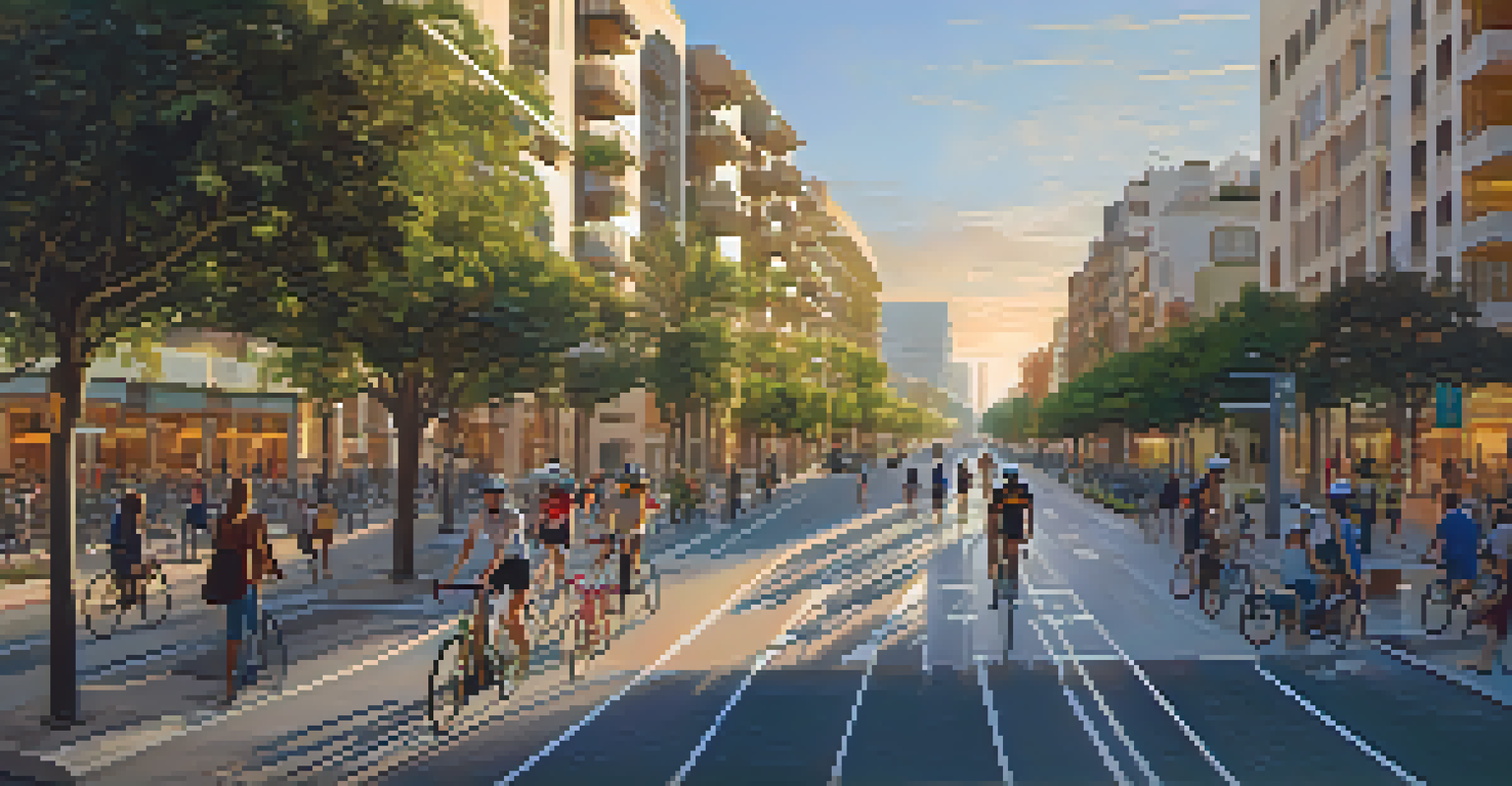Evaluating Bike-Friendly Initiatives in Spain's Urban Areas

Understanding the Importance of Bike-Friendly Cities
Bike-friendly cities are essential for promoting sustainable transportation. They not only reduce traffic congestion but also lower air pollution levels. In Spain, urban areas are increasingly recognizing the value of cycling as a viable mode of transportation.
Cycling is a sustainable form of transportation that contributes to cleaner air and healthier communities.
By encouraging biking, cities can improve public health, as cycling is a great way to incorporate physical activity into daily routines. Moreover, bike-friendly initiatives can enhance the quality of life for residents, making urban spaces more enjoyable.
As cities adapt to the changing needs of their populations, understanding the importance of biking initiatives becomes crucial for future urban planning.
Analyzing Spain's Major Urban Areas for Cycling Initiatives
Cities like Barcelona, Madrid, and Valencia have made significant strides in promoting cycling. These urban areas have implemented infrastructure such as dedicated bike lanes, bike-sharing systems, and secure parking facilities. Each of these initiatives aims to create a more cyclist-friendly environment.

For instance, Barcelona's extensive network of bike lanes has transformed the cityscape, making it easier for residents and tourists to navigate on two wheels. Similarly, Madrid has adopted a bike-sharing program that has proven popular among locals and visitors alike.
Benefits of Bike-Friendly Cities
Bike-friendly cities promote sustainable transportation, improve public health, and enhance the overall quality of urban life.
By analyzing these major urban areas, we can glean insights into effective strategies and potential improvements for bike-friendly initiatives across Spain.
Key Infrastructure Components for Cycling Success
The success of cycling initiatives heavily relies on proper infrastructure. This includes well-designed bike lanes, safe crossings, and adequate signage that caters to cyclists' needs. Without these key components, biking can become a daunting task for many.
A bike-friendly city is a happy city, where residents can enjoy a more active lifestyle and a stronger sense of community.
For example, cities that have invested in protected bike lanes report higher cycling rates and increased safety for riders. Such infrastructure not only encourages more people to cycle but also helps to reduce accidents and promote a culture of biking.
Ultimately, the right infrastructure is a game-changer for creating a bike-friendly city that everyone can enjoy.
Community Engagement in Promoting Cycling Culture
Community involvement plays a vital role in promoting a bike-friendly culture. Local governments can organize events like 'Bike to Work Day' or community bike rides, which help to raise awareness about the benefits of cycling. These initiatives foster a sense of community and encourage participation.
Involving local businesses can also enhance these efforts, as they can offer incentives for customers who arrive by bike. This not only boosts cycling numbers but also strengthens community ties.
Infrastructure Drives Cycling Growth
Proper infrastructure, such as dedicated bike lanes and safe crossings, is essential for encouraging more people to cycle and ensuring their safety.
Engaging the community in these initiatives creates a sense of ownership, making it more likely that residents will support ongoing bike-friendly projects.
The Role of Technology in Enhancing Cycling Experiences
Technology is revolutionizing the way cyclists navigate urban areas. Mobile apps that provide real-time information on bike lanes, traffic conditions, and available bike-sharing options are becoming increasingly popular. These tools make cycling more accessible and user-friendly.
For example, apps like Citymapper and Google Maps now include cycling routes, helping users find the safest and most efficient paths. This integration of technology not only aids cyclists but also encourages more people to choose biking as a mode of transportation.
As technology continues to evolve, its role in enhancing cycling experiences will undoubtedly grow, making urban biking even more appealing.
Evaluating the Economic Impact of Bike-Friendly Initiatives
Investing in bike-friendly initiatives can have significant economic benefits for cities. Increased cycling can lead to higher retail sales, as cyclists are more likely to stop at local shops and cafes. This economic boost is an important factor for city planners to consider.
Moreover, reduced traffic congestion translates to lower costs for municipalities in terms of road maintenance and infrastructure expansion. The savings can be redirected towards improving public transportation and other community services.
Community Engagement Boosts Cycling
Active community involvement and local business support are crucial for fostering a bike-friendly culture and encouraging more residents to embrace cycling.
Evaluating these economic impacts provides a compelling case for the continued support of bike-friendly initiatives in urban areas.
Challenges and Solutions in Implementing Bike Initiatives
Despite the benefits, implementing bike-friendly initiatives does come with challenges. Issues like funding, public resistance, and existing infrastructure can hinder progress. However, these obstacles can be addressed through strategic planning and community engagement.
For instance, cities can seek public-private partnerships to fund bike initiatives, while also conducting outreach programs to educate residents about the benefits of cycling. These strategies can help to alleviate concerns and build support for new projects.

By acknowledging and addressing these challenges, urban areas can create robust bike-friendly environments that cater to the needs of all citizens.